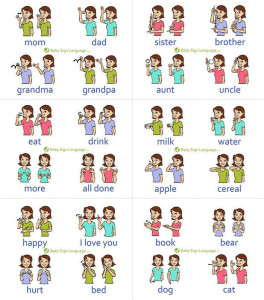What is a flash card?
Children who are diagnosed with autism quite often have poor communication skills, Tools, such as photo language cards or flashcards, can help increase an autistic child’s vocabulary, improve communication skills and promote language development. Here are the top 20 flash cards that have effectively improved language building among children with autism spectrum disorders.
Why are flashcards effective?
Autism and ID Flash Cards
When first working with an autistic child who has minimal communication skills, flashcards are used to help the child identify objects and people in his or her everyday surroundings.

1. Family, relatives and significant others. Using photos, flashcards are created to help the child identify family members, teachers, a babysitter, etc.
2. Everyday objects. Real life photo flashcards can be help the child learn the names of the objects he or she sees in everyday life.
3. Letters. Letter flashcards can be used to help a child learn letter recognition by pointing at a letter that is orally presented to him.
4. Numbers. Whether it’s teaching a child to learn how to count, or to respond to a question, such as, “How many hands do you have?”, number flashcards are very effective.

Improve understanding of language.
Flashcards can be used to help an autistic child understand everyday language.
5. Identifying emotions. Using flashcards that show different emotions, such as happy, sad, angry, can help a child learn about the different types of emotions and how to express his own emotions.
6. Action language. To help a child learn the concept of action verbs, such as jumping, swimming, painting, etc., photo action flashcards come in handy.
7. Word and photo cards. Once the child begins to recognize photos of objects, begin using flashcards that also contain the printed word of each object.
8. Daily schedule. Autistic children like routine and having a consistent schedule. Flashcards can be used to let the child know what the day will consist of. For example, reading, math, art, lunch, recess, etc.

Categorizing flash cards.
As the child begins to understand everyday objects, categorizing becomes a very useful tool.
9. Matching cards. Flashcards are used to match pairs.
10. Items that belong together. Learn to categorize foods, clothing, toys, etc.
11. Opposites. Child learns to match cards that are opposites, such as cold and hot.
12. Seasons. Child identifies cards that belong to each season.
Increase language building.
Flashcards can also be used to help a child once he has a basic understanding of words.
13. Compound words. Child learns to match cards to form compounds, such as sand-box.
14. Short sentences. Flash cards are used to form sentences with 2 to 4 words.
15. Responsibility checklist. Cards with phrases such as, “brush teeth”, “make bed” are used to help the child learn responsibilities at home.
16. Fill in the blank. To help express needs, the child fills in the blank of a flashcard. For example, “I want _____.”
Reinforce oral language.
Once an autistic child begins speaking, flashcards can be used to reinforce language.
17. Sight words. Basic 200 words the child should know.
18. Sequencing. Knowing the steps to complete a task.
19. Open-ended questions. For example, “How are you today?”
20. Cause and effect. Understanding what will happen if a certain action is done.
You may find flashcards for autism free online that promotes effective language and learning.
Please recommend some cards to help with my aitistic son